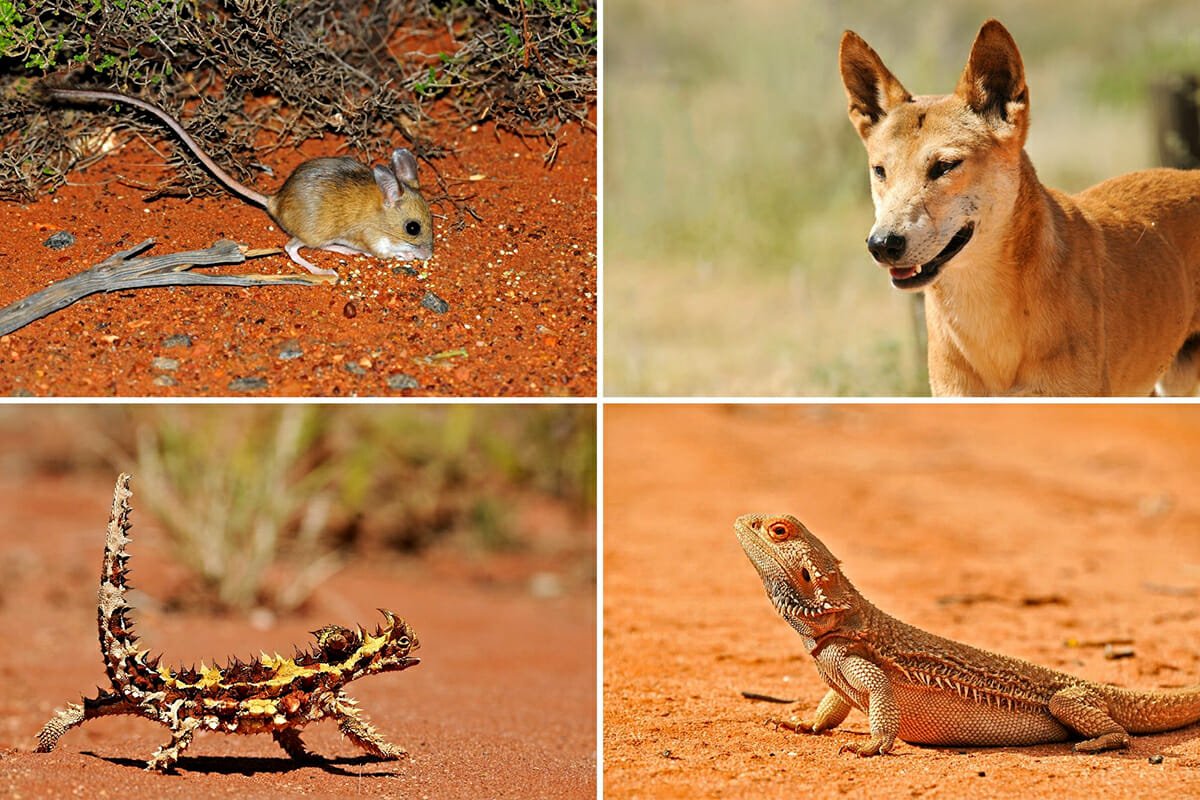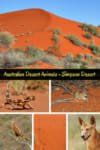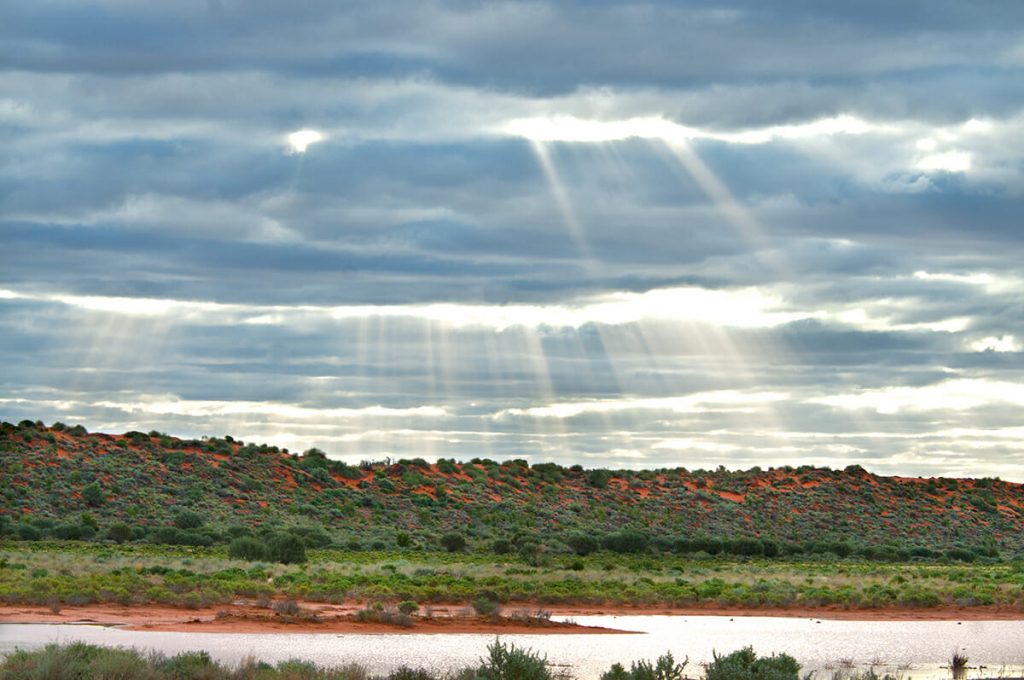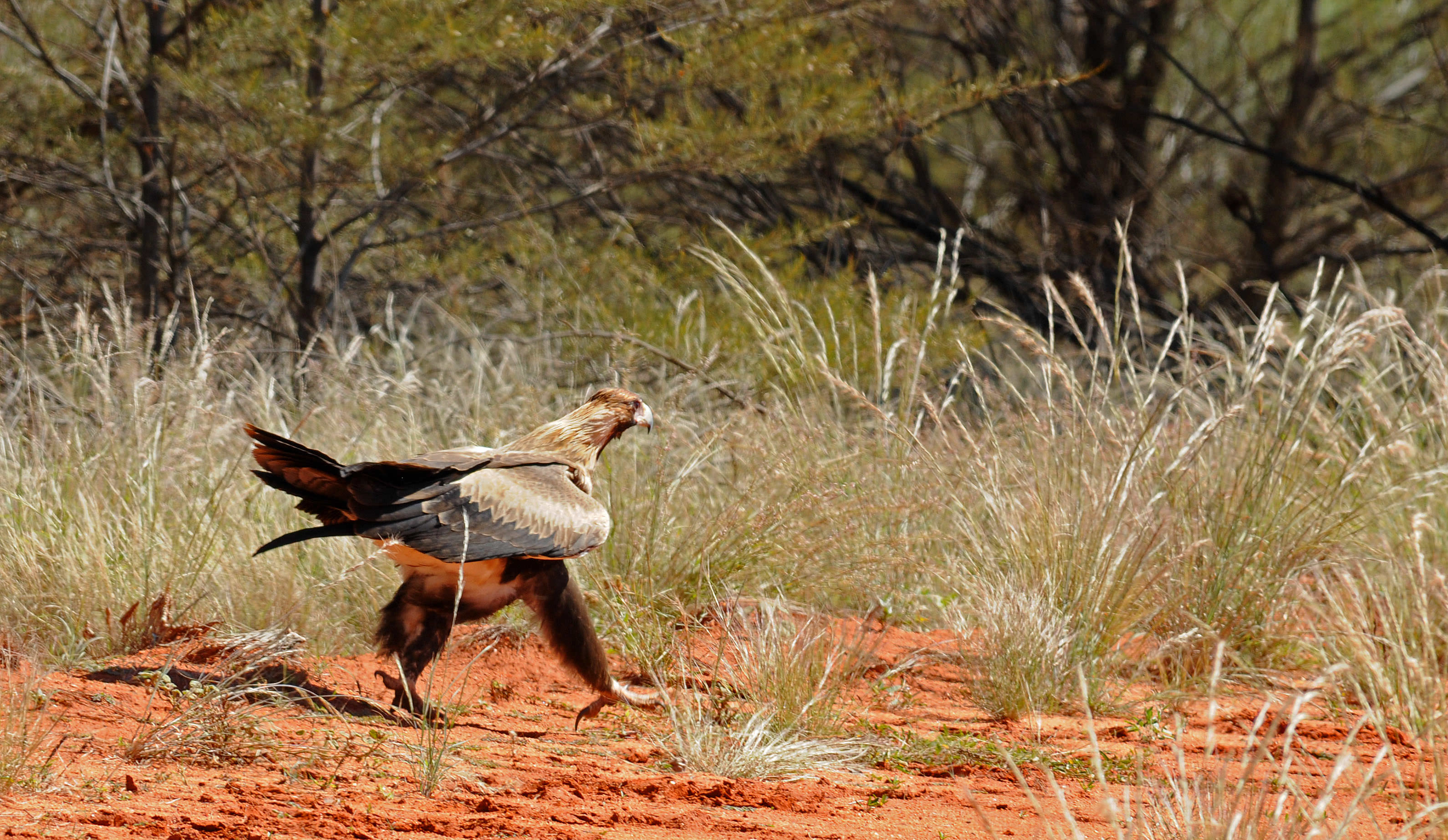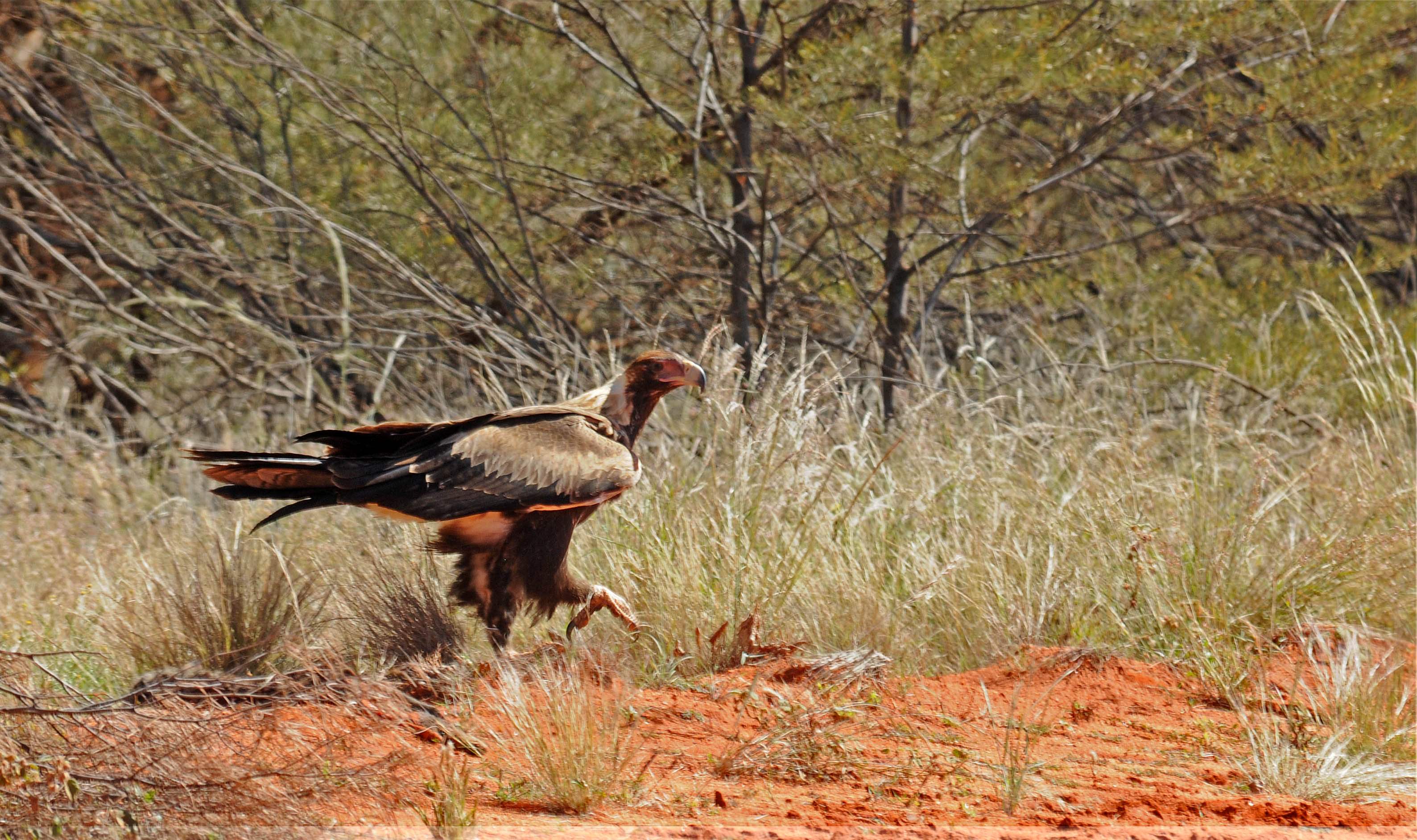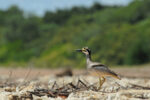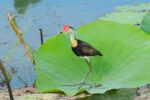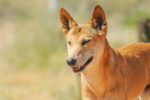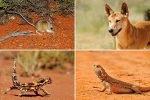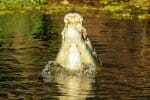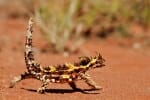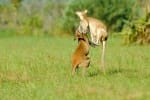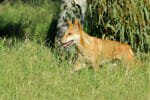One of Australia’s most striking landscapes, the Simpson Desert is a largely uninhabited arid region that covers 143,000 square kilometres in Central Australia, near the middle of the continent.
Like most deserts, it has a hot and dry climate and usually receives less than 150 mm of rain a year. However, when the rains do come, they often flood the desert.
The periods of above-average rainfall are followed by an explosion of life in the desert. Flowers burst from the sparse vegetation, and many Australian desert animals rush to reproduce, taking advantage of the favourable conditions.
READ MORE: 50 Outstanding Safari Holidays Destinations Outside of Africa
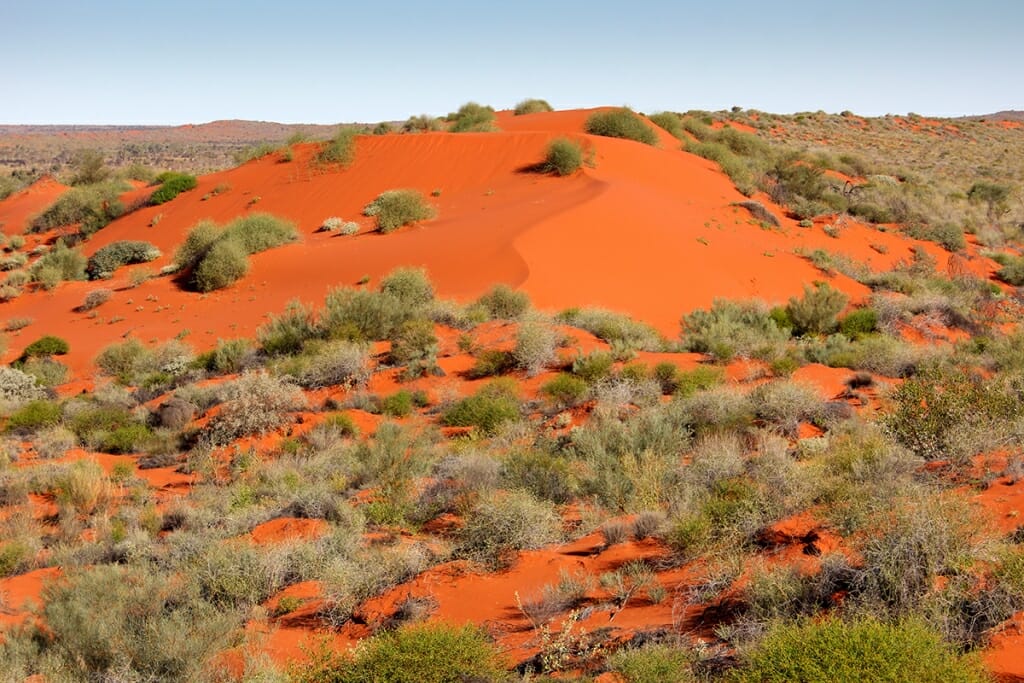
Old Andado Homestead
As part of our Australian road trip, we visited the Old Andado station that lies on the edge of the Simpson Desert, about 330 km southeast of Alice Springs and stayed much longer than we expected.
The station is an iconic remote Australian homestead that has been restored to its original 1920s condition. In its glory days – in the years before electricity, running water and phones, the station ran cattle, sheep, and horses. It was a true ‘wild west’ lifestyle in the harshest conditions imaginable, with daytime temperatures rising to 50 degrees Celsius.
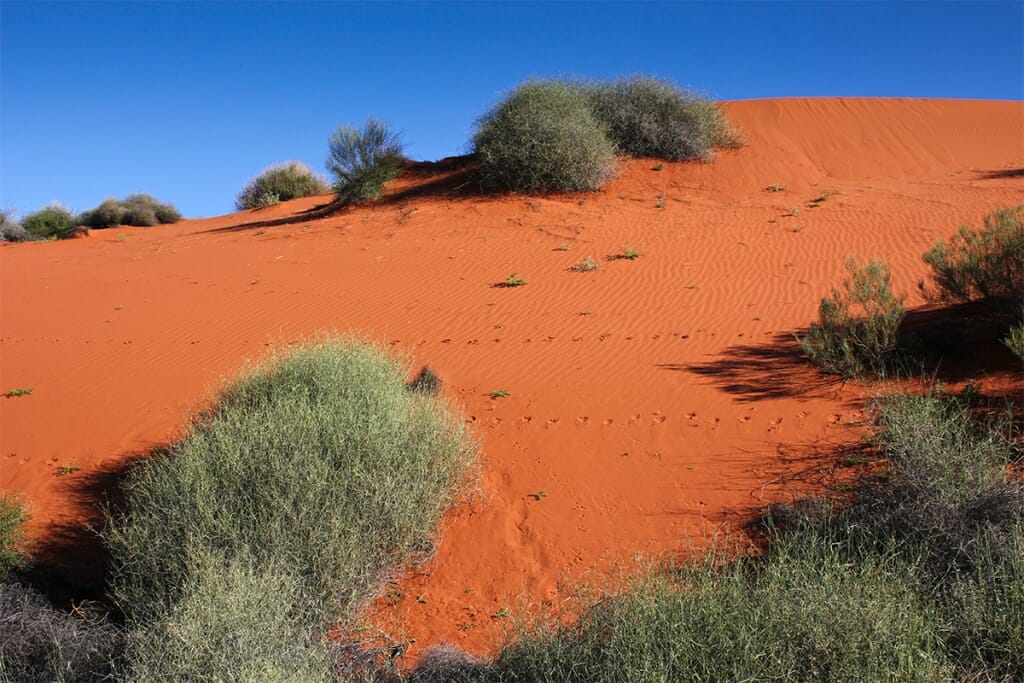
Now the station is a kind of museum that lies between two red sand dunes that seem to stretch on forever. There are some basic cabins constructed within the house paddock and a shower block with a hot water boiler outside.
The dilapidated remnants of the old work sheds and the rusted-out trucks scattered around the homestead make the station feel almost like an archeological dig. The sheds looked like they would be a good roosting spot for bats or barn owls, but we didn’t find any traces of either.
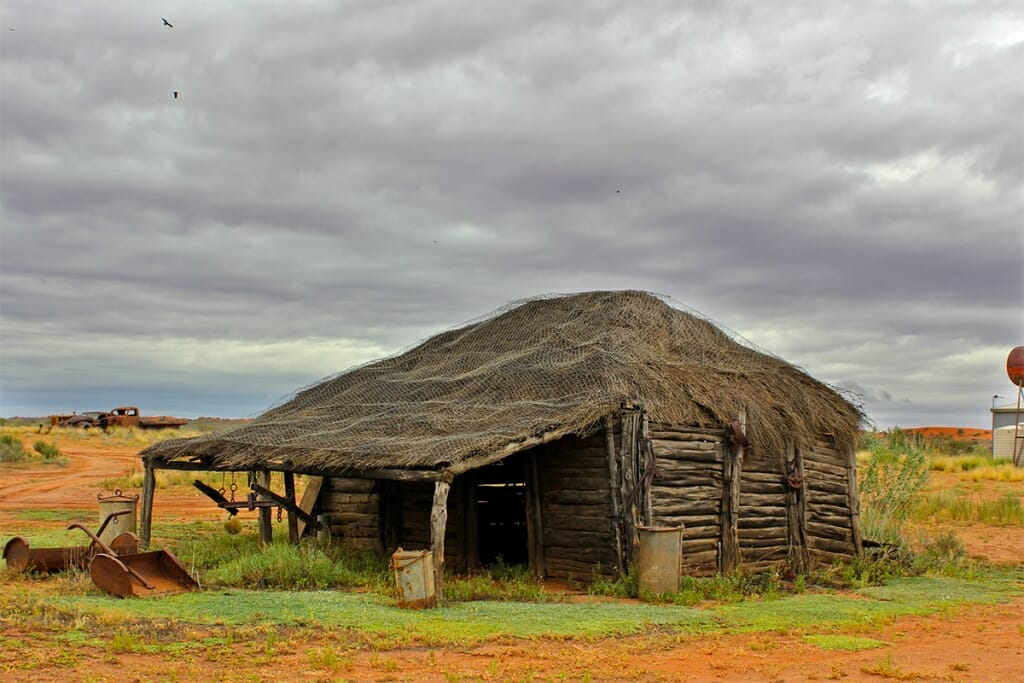
Rain in the Simpson Desert
When we arrived at Old Andado, there was a group of geologists staying at the homestead, so we opted to camp at the foot of the dune instead. And during our first night there, the weather turned, and we woke up to an overcast sky and drizzling rain.
The rain didn’t stop for most of the day, and by the late afternoon, we knew that the roads would be too washed out to travel on for a few days. We were rained in in the desert! I couldn’t think of a better reason to extend our trip!
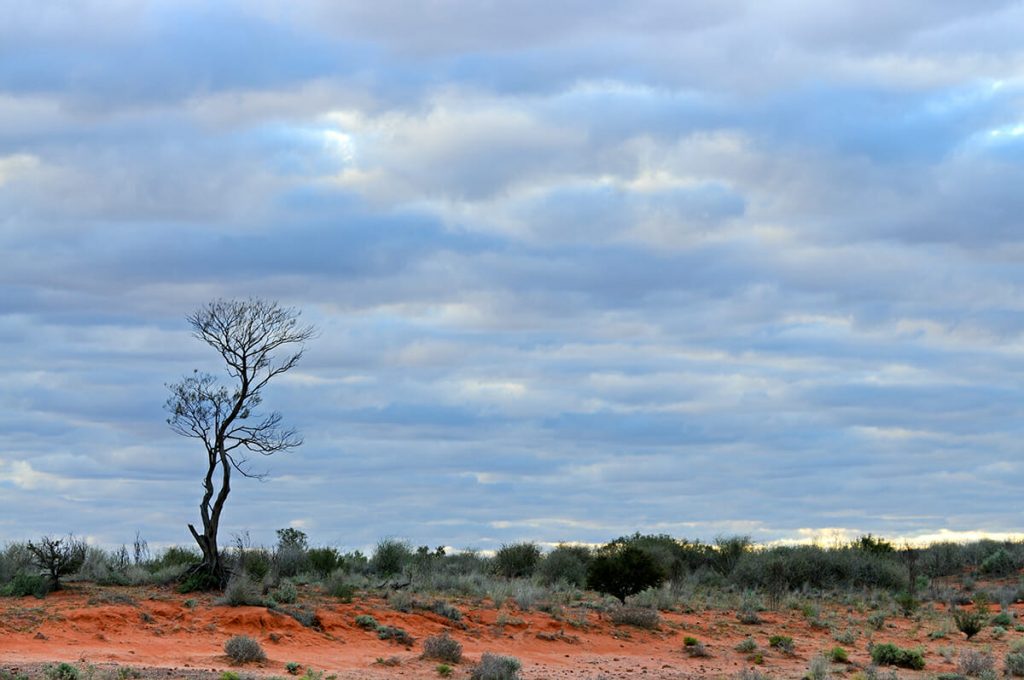
Australian desert animals
More or less stuck at the homestead, we explored wildlife watching options around the house paddock. A flock of noisy Little corellas seemed to be residents at the site, as were Welcome swallows and Fairy martins. And dozens of Black kites circled above the dunes.
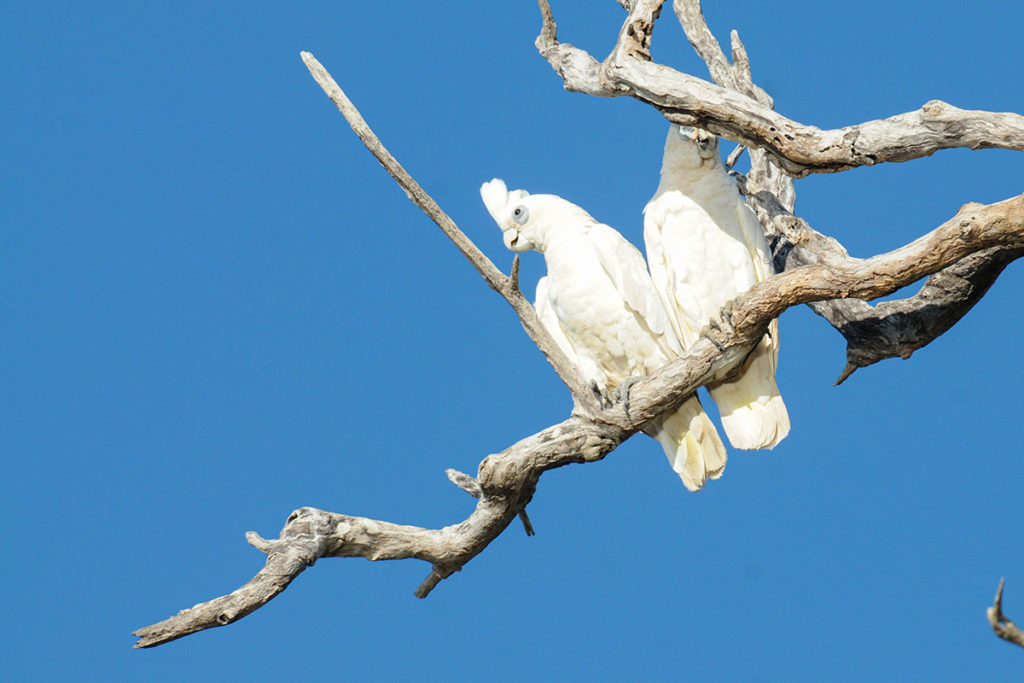
Spencer’s Desert Burrowing Frog
After dark, I came across a Bynoe’s gecko and a Spencer’s Desert burrowing frog. It may come as a surprise, but frogs are some of the most common animals in Australian deserts. Of course, they are rarely seen because they spend most of their lives burrowed underground. It is one of the most unique adaptations among Australian animals.
Burrowing frogs emerge above ground only a few times in their lives after periods of heavy rain. And when I say ‘heavy rain’, I mean a proper downpour.
Frogs emerge from their burrows for a single purpose – to find a mate and reproduce. So, they need to make sure that the puddles where they’ll leave their eggs will not dry out too quickly and kill their tadpoles. That’s why they wait for heavy rains to produce enough water so it would seep into the ground to wake them up from their slumber.
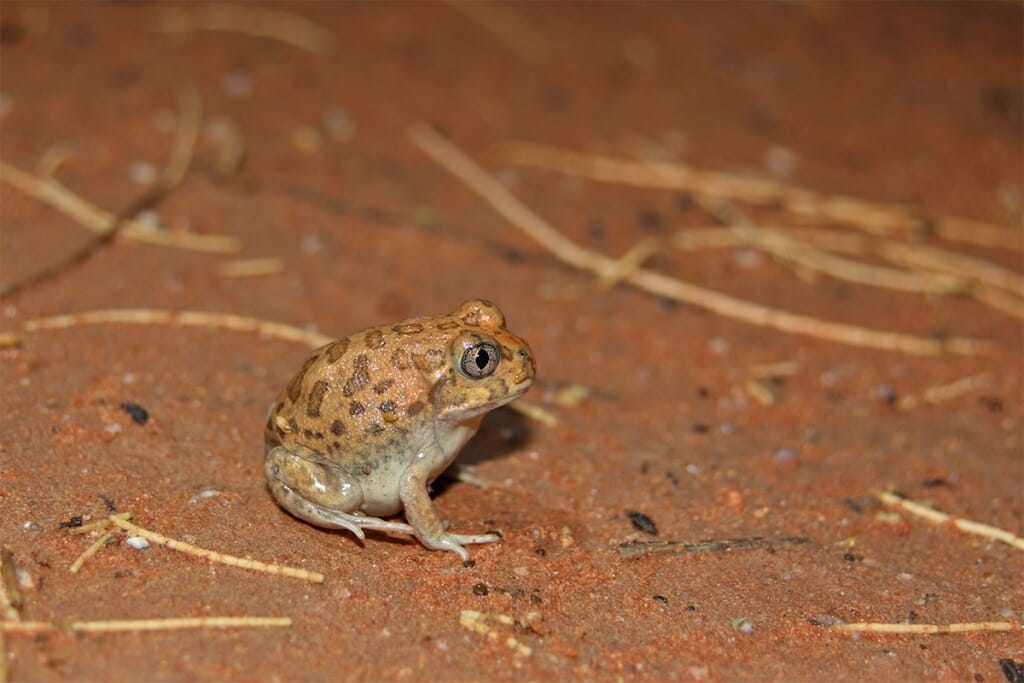
Once the rain cleared, we went to investigate our surroundings. We drove out about 6 km from the homestead and went for an exploratory walk on the plains. Almost immediately, we noticed that the sand was crisscrossed with a multitude of tracks. This place was rodent heaven.
Long-haired rats
A lot of the tracks ran in an organized fashion: there would be a central mound and a number of ‘runways’ leading away from it in different directions, some of which ended at a smaller mound that was connected to an entire network of different mounds by more well-trodden ‘runways’.
At night the plain literally came to life. The ‘runways’ turned out to belong to Long-haired rats and the species were clearly ‘booming’. Long-haired rats are known to undergo ‘boom’ and ‘bust’ cycles in response to resource availability.
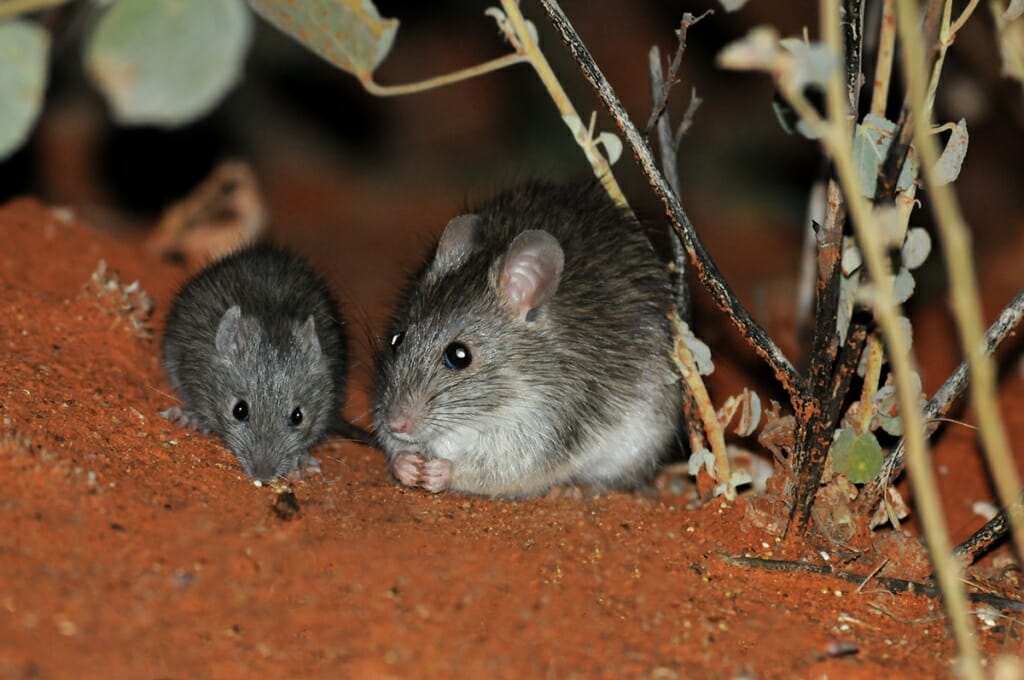
This year brought above-average rainfall to the region, and the rodents were quickly responding to the abundance of food. There were still many young around.
Spinifex Hopping Mice & Desert Mice
In amongst the Long-haired rats, there were a couple of Short-tailed desert mice and a few Spinifex hopping mice – one of the cutest Simpson Desert animals. Looking like mini kangaroos, they hoped only short distances away from their burrows and immediately retreated back to safety at the slightest disturbance.
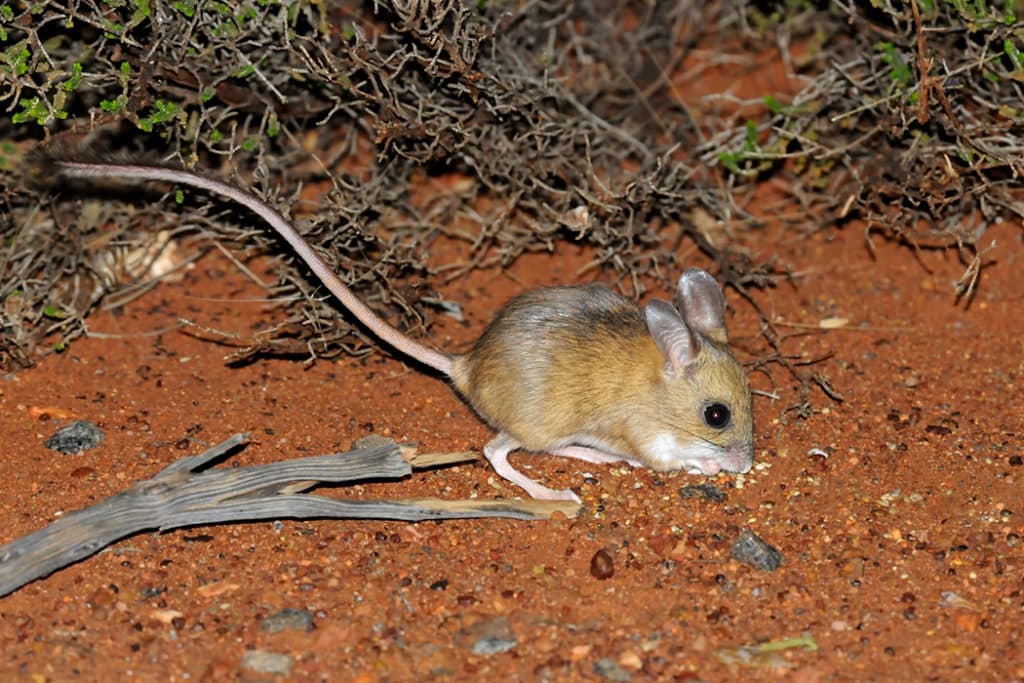
On the drive back, a Desert mouse ran across the road and froze in the headlights, which gave us a chance to take a few close-up photos of it.
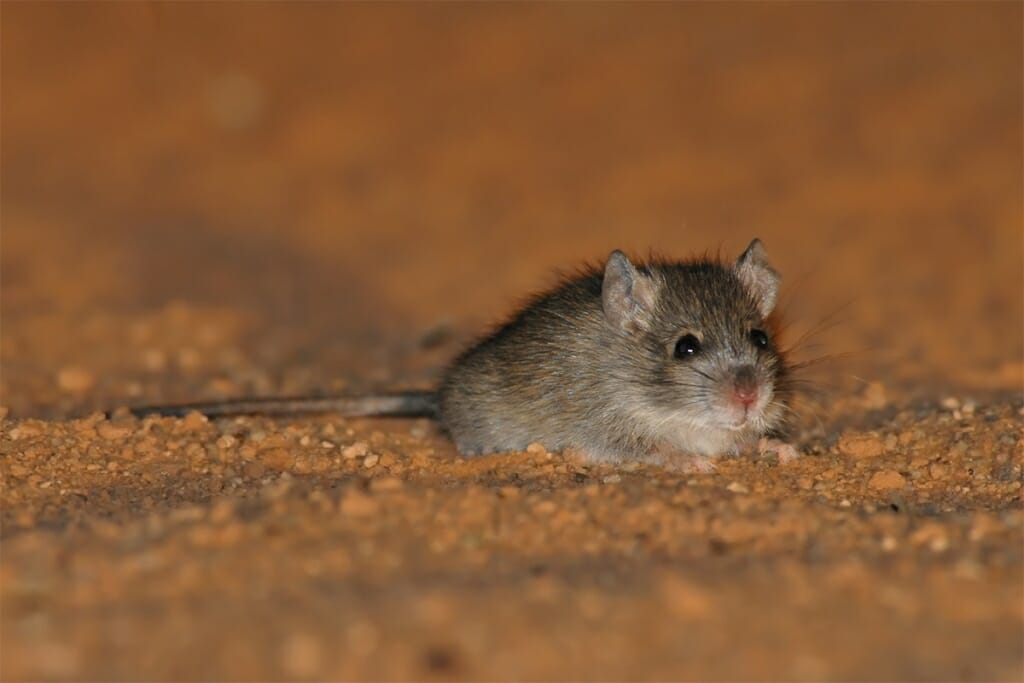
Lesser hairy-footed dunnart
The following night we drove to a gibber plain that we passed on the way in. It was a cold and miserable night, and although there were a few desert frogs around, not much else was happening. And then I caught some unusual eye shine with my head torch. I thought it was another desert frog, but on closer inspection, it turned out to be a Lesser hairy-footed dunnart!
While it may look like a little mouse, it actually belongs to the Dasyurid family, like the much bigger Quolls and the Tasmanian devil. The Dasyurids are Australia’s marsupial predators.
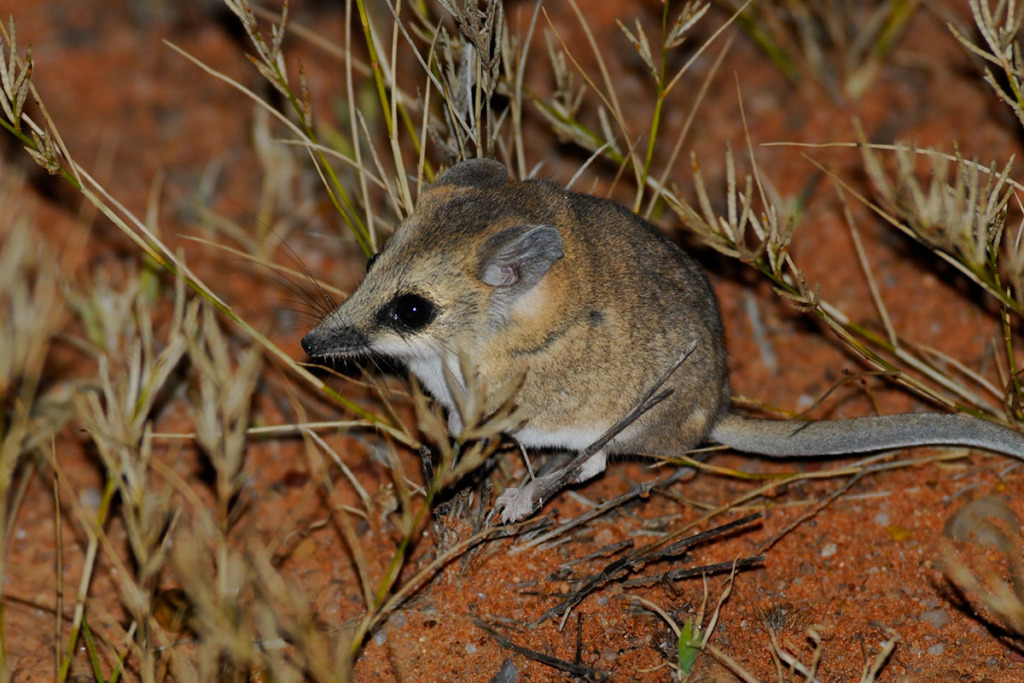
Dingo
On the drive back, we spotted a dingo, probably the one that has been leaving tracks in the sand around the homestead. It was a magnificent animal. Easily one of the most striking Simpson Desert animals. We saw him again during the day a couple of days later.
A few meters up the road from where we saw the dingo, we spotted a red fox. The rodent boom in the desert was providing a plentiful prey base for at least three different carnivores: dingo, red fox, and feral cat. Not to mention the birds of prey.
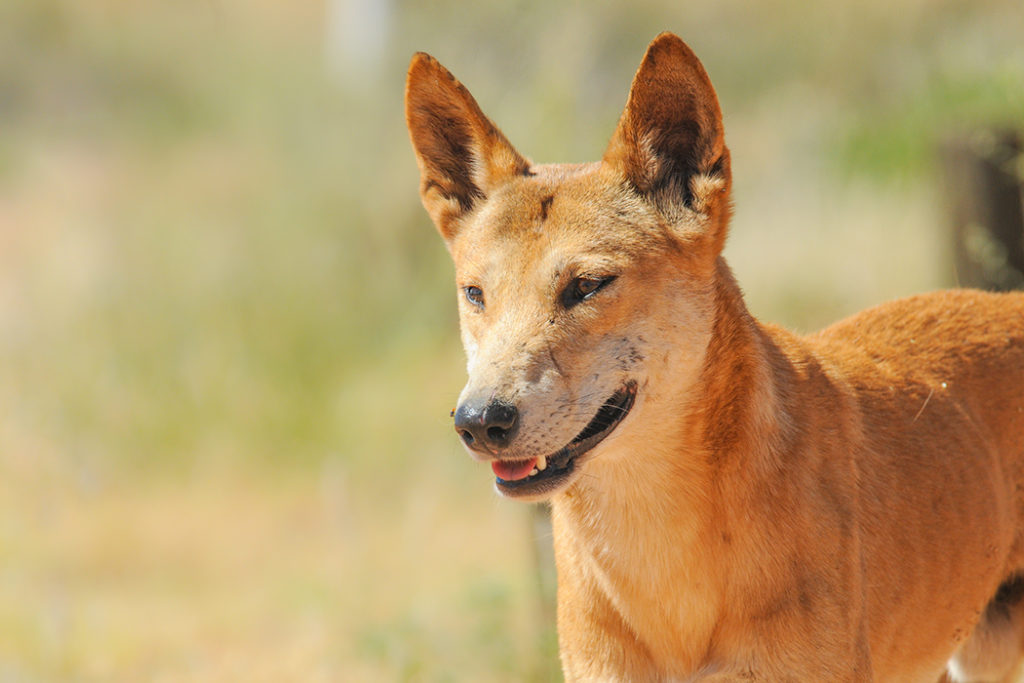
Wild Cat
The next night we decided to spend a bit more time exploring the ‘homestead dunes’ rather than going further afield. There were a lot of rodents around, but for some reason, they were much more nervous than their compatriots out on the plains.
Some of the larger rodents looked quite different from the long-haired rats, and I think these were Plains mice, but I could never get close enough to them to make sure.
While chasing rodents up the side of a dune, we saw a cat down on the plain. It was curious enough to climb the dune and come right up to us to see what we were and what we were up to. It did not have an ounce of fear, just confident curiosity.
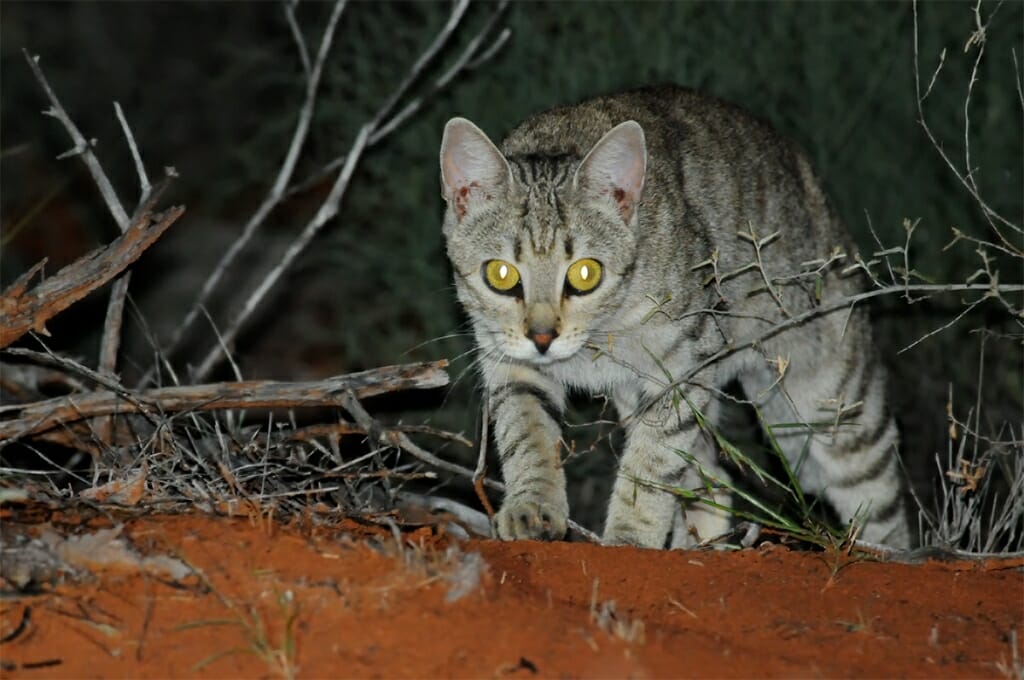
Australian cats fascinate me. Obviously, they are decimating Australia’s biodiversity, and that’s a great shame. But we don’t seem to be able to do anything about it. Eventually, we will have to accept them as part of the Australian landscape, and they will become Australia’s own wild cats.
The only other cat to live in a true desert is the Sand cat from the Sahara Desert. Sand cats have quite a few adaptations to life in the desert. They have huge ears that help the cat to dissipate its body heat and improve its hearing so it can detect rodents in their underground burrows. The sand cat’s feet are covered with long tufts of hair to protect them from the scorching sand.
Natural selection will keep shaping Australia’s cats, and it would be fascinating to see the range of adaptations they develop for living in desert conditions.
But before that happens, cats, together with foxes, will keep devastating native Australian wildlife. To get an idea of the range of Australian desert animals that have been extirpated by the introduced predators, check out this post about the mammals of the Australian Outback.
Reptiles in the Desert
One of the most common animals in the Australian Desert is the Bearded dragon. They can be seen lying on the ground, sitting on fences, hanging off tree branches, or sitting dab-smack in the middle of the road.
We came across a large dragon that was desperately trying to look as flat as he possibly could to appear to be part of the road.
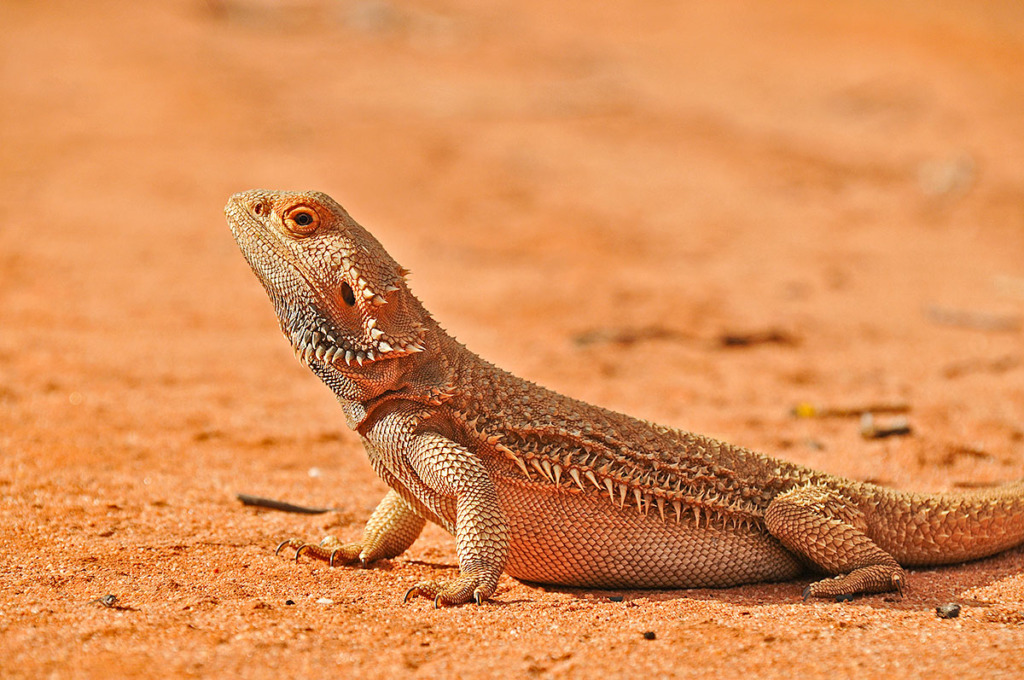
But the coolest reptile and one of the most extraordinary desert animals in Australia is the Thorny Devil. Aside from an intimidating array of conical spikes that cover the top half of its body, the Thorny Devil is endowed with a false head on the back of its neck. The lizard presents its fake head to potential predators by dipping its real head when sensing danger. The bite on the squashy false head is unlikely to be life-threatening.
Avoiding predators is not the only challenge for the creatures of the desert; they also have to find water to survive. The Thorny devil’s ingenious solution lies in the shape of its scales, which are ridged in such a way that they direct water to its mouth. All the devil has to do is stand in the puddle or rub past dew-covered vegetation, and the water will be delivered straight to its mouth.
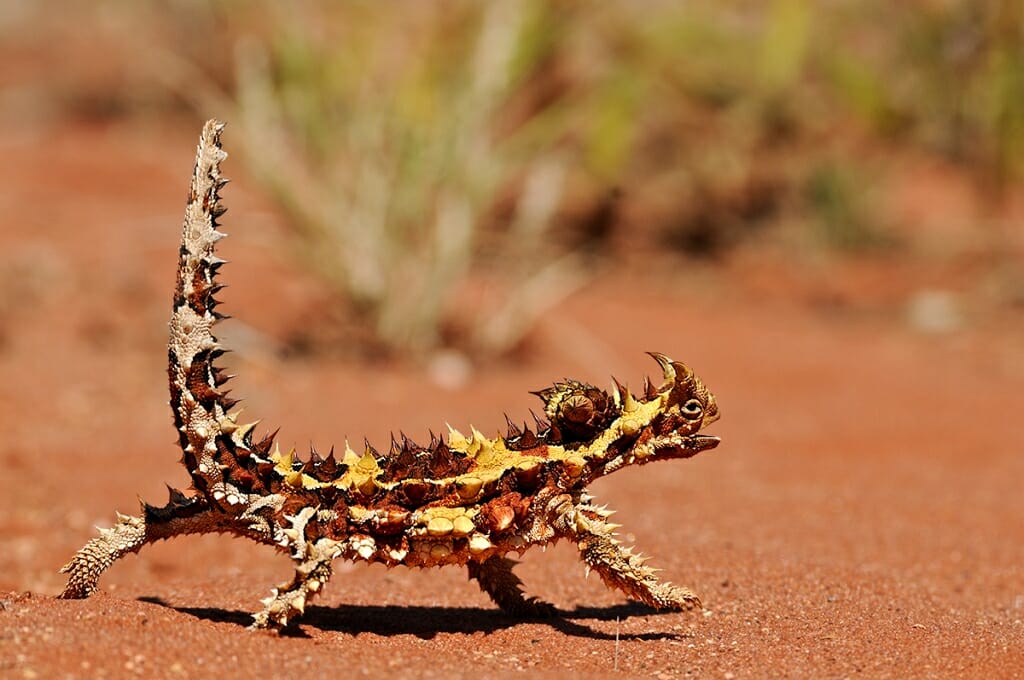
Sand goanna is also a common sight across Australia’s arid region, and the Old Andado home station is inhabited by a female gonna.
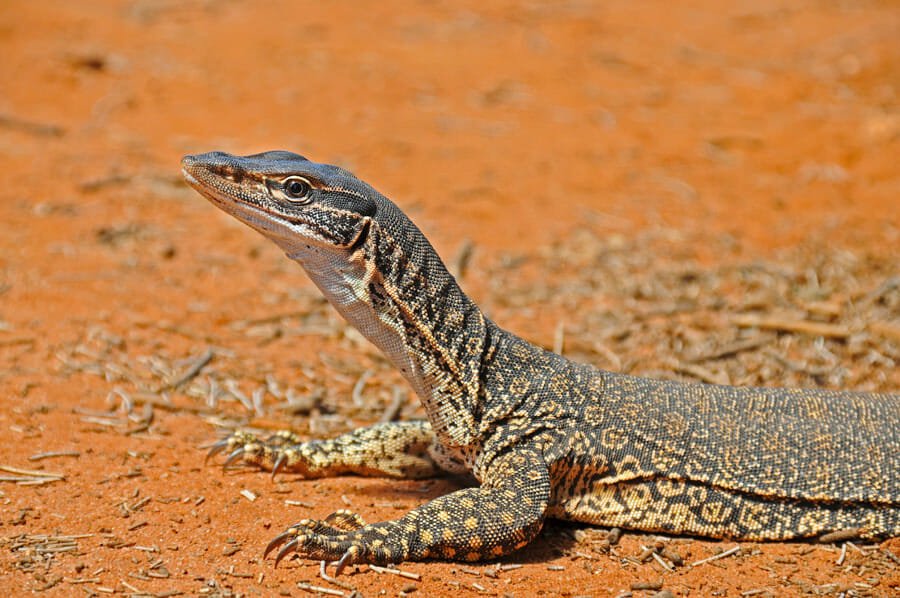
To learn more about the reptiles of Australian deserts, check out this post about the reptiles of the Australian Outback.
Birds in the Simpson Desert
One day, we took a drive around the property and came across a waterhole that attracted an abundance of birdlife. Flocks of Diamond doves, budgies, and zebra finches dotted every branch of the dead tree standing nearby. A few Red-tailed black cockatoos were camped up at the top of a different tree.
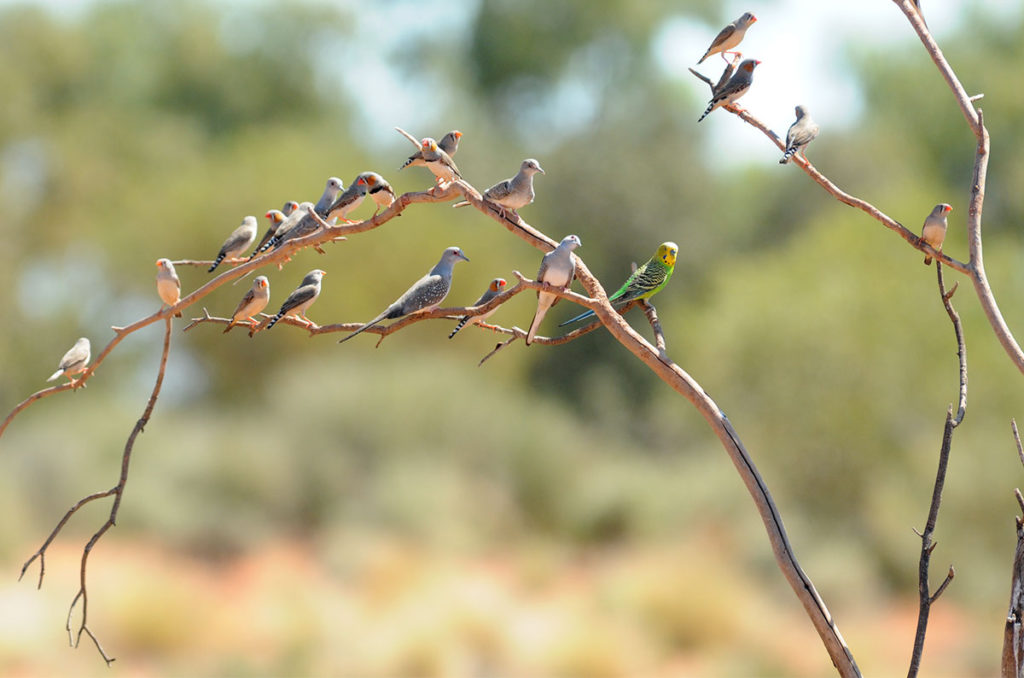
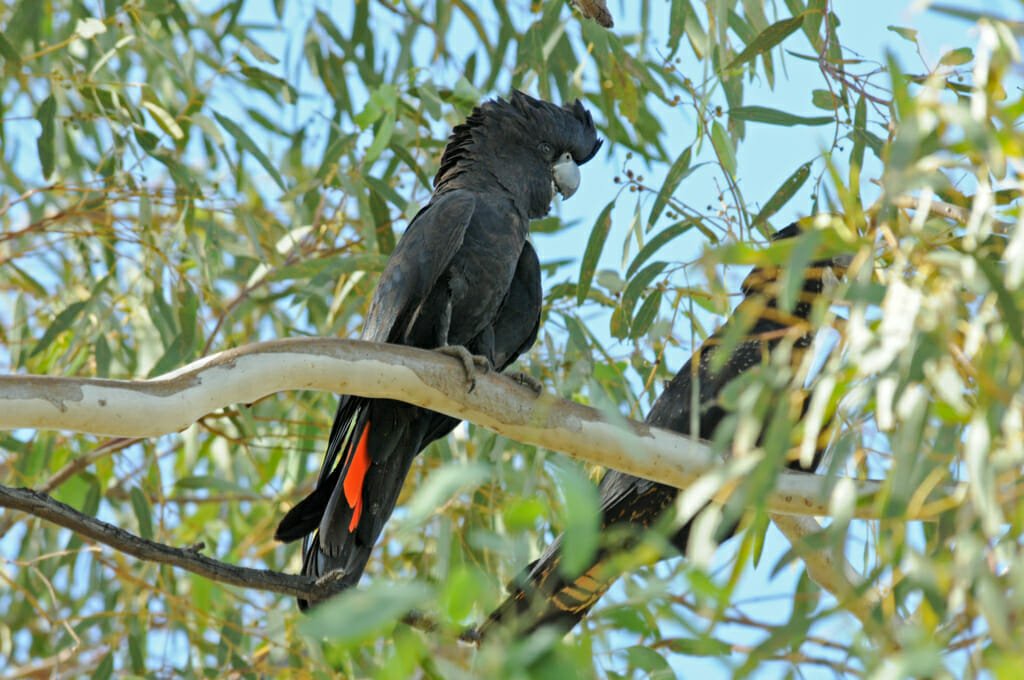
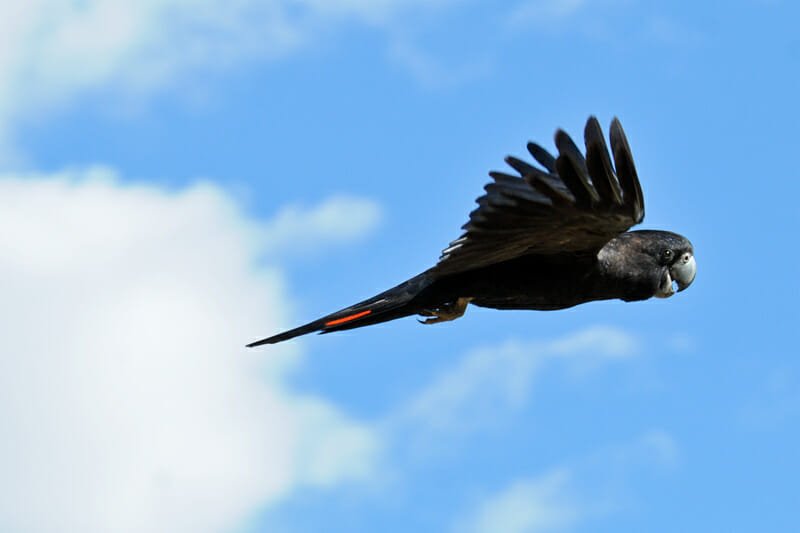
However, most of the birds we saw around the homestead. There were usually a few Galahs, Red-capped robins, Black-shouldered kites and Brown falcons.
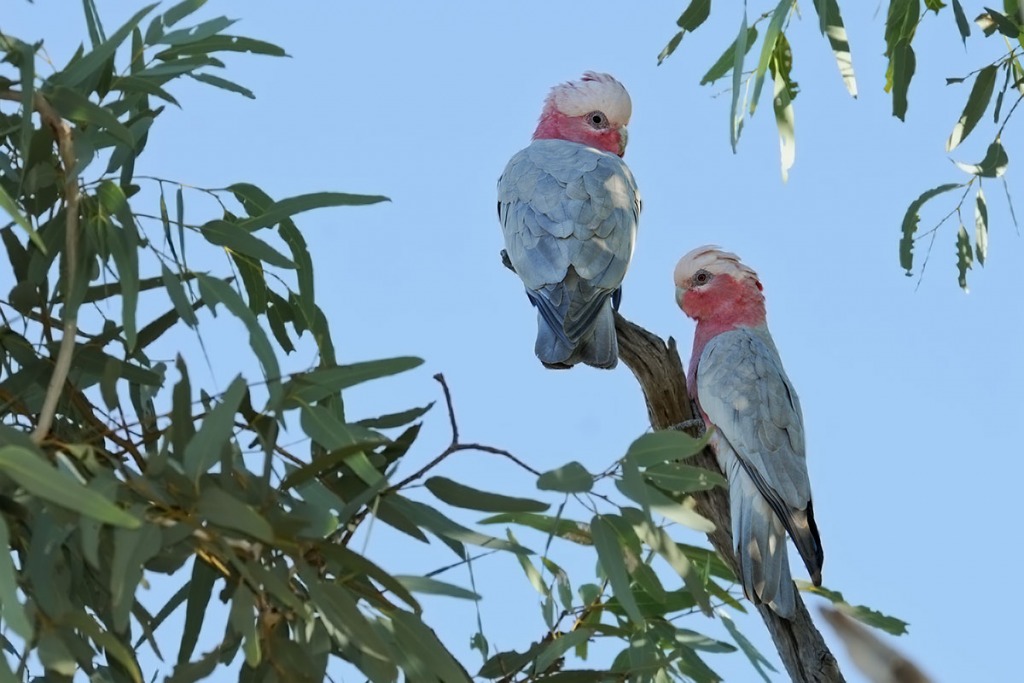
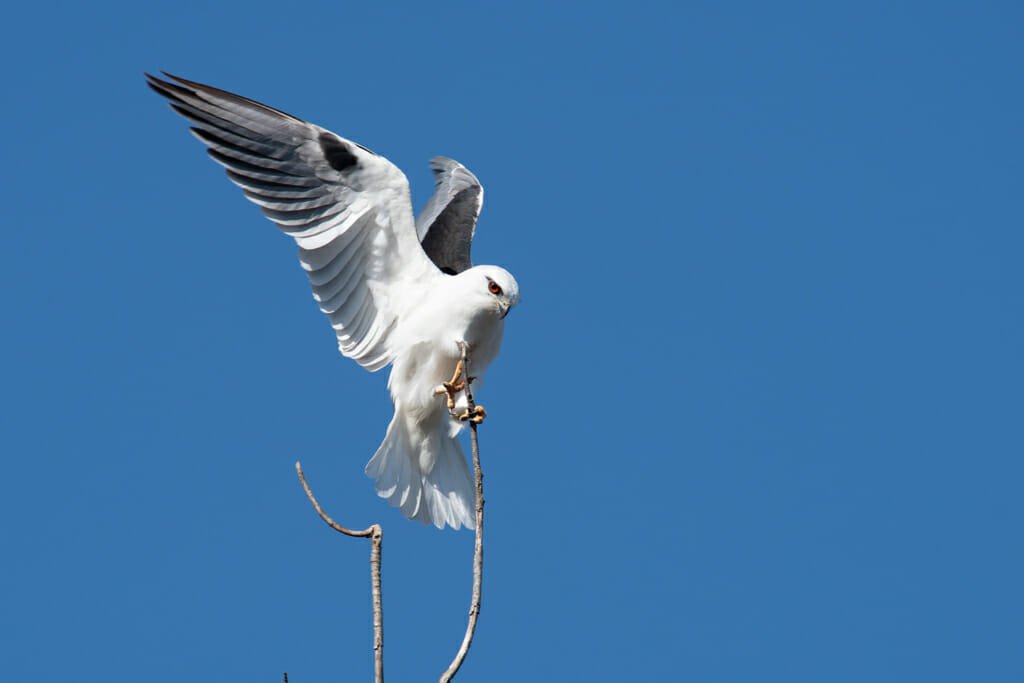
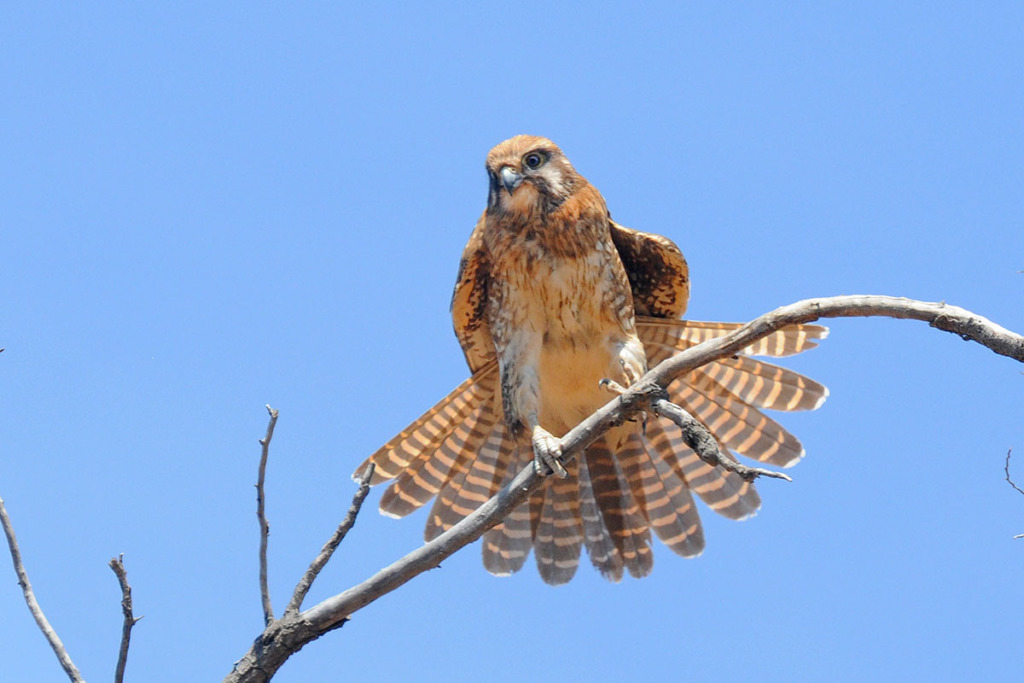
There are, of course, many more birds making a living in the harsh Australian deserts. Here is the post I wrote about the birds I spotted in the Australian Outback while working at a wildlife sanctuary.
It was a fantastic experience to spend five days in a true Australian desert, probably the most remote place I have ever visited. As we were leaving, heading back towards Kulgerah, Old Andado turned up a final sight to remember: a huge Wedge-tail eagle was trying to drag something off the road. That something turned out to be a dead cat that was hit by a car not too long ago. There is no waste in nature.
Here is the full list of animal species in the Simpson Desert.
For the adventurous souls, there are caretaking opportunities at Old Andado
How to get to Old Andado
- Via the Old Andado Track (section of the Binns Track) from Alice Springs to Santa Teresa and out through to Allambi Station. This leads directly to the Old Andado homestead. The drive is 330kms and takes approximately 4-5 hour. 4WD recommended.
Alice to Santa Teresa – 93km
Santa Teresa to Old Andado – 237km - Via Stuart Highway to Kulgera and then in through Finke Community (Apatula), through New Crown and Andado Stations to the Old Andado Homestead. This drive is 531kms and takes approx 6-7 hours. 4WD recommended.
Alice to Kulgera – 274km
Kulgera to Finke – 139km
Finke to Old Andado – 118km
More Northern Territory nature adventures
- Karlu Karlu / Devils Marbles Conservation Reserve
- Things to Do in Darwin and Beyond for Nature Enthusiasts
- Fogg Dam Conservation Reserve – An Underrated Gem Near Darwin
- Adelaide to Darwin Road Trip: Ultimate Wildlife Safari in the Australian Outback
- Spotting Australian Desert Animals in the Simpson Desert
- Are Kakadu animals out to get you? Wildlife watching in Kakadu NP
- Uluru animals – Weird and wonderful creatures you can spot at Uluru
- Mary River: a Wildlife Hotspot in Northern Australia
- The stunning West MacDonnell Ranges – Northern Territory Road trip

